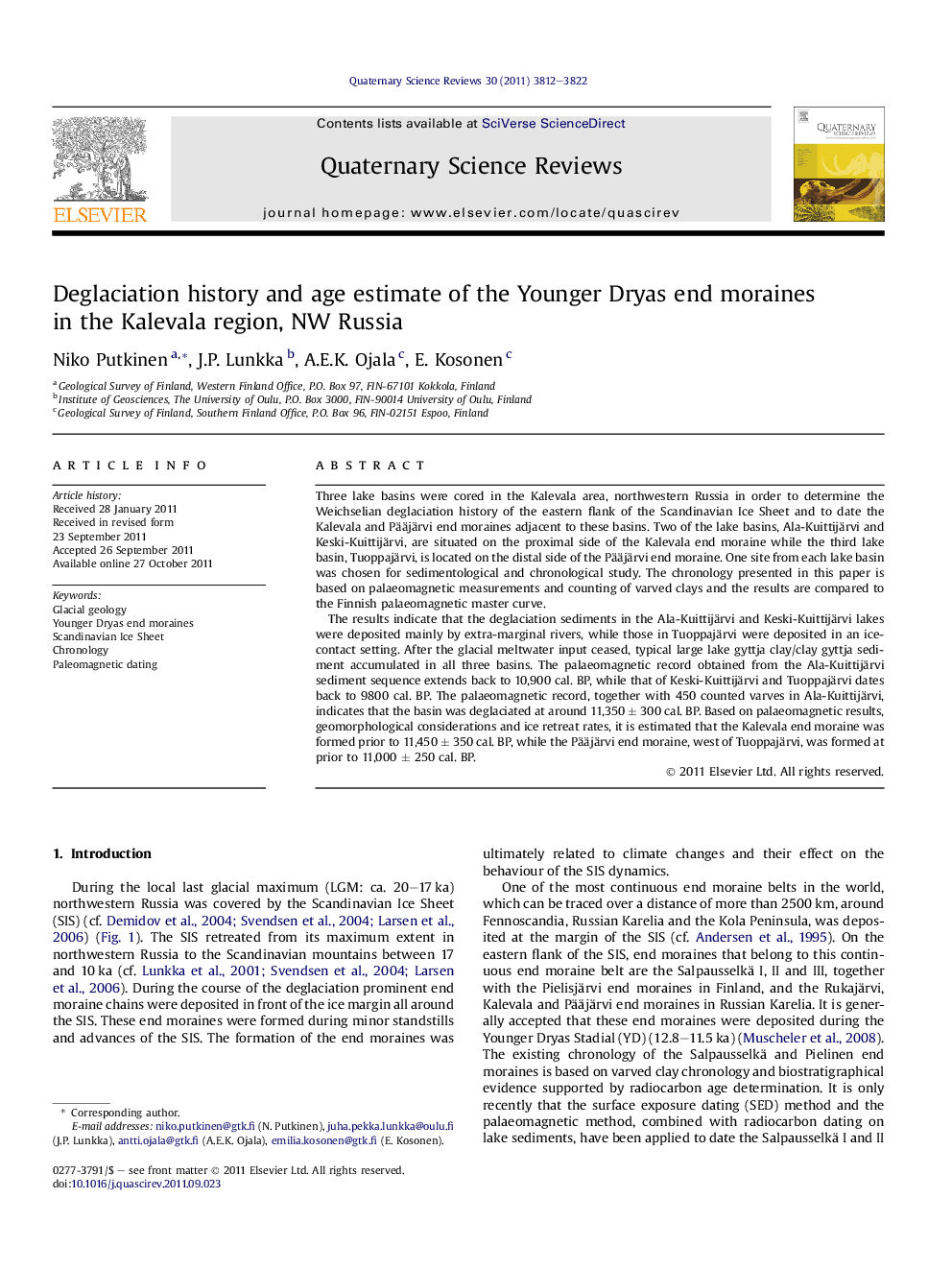| کد مقاله | کد نشریه | سال انتشار | مقاله انگلیسی | نسخه تمام متن |
|---|---|---|---|---|
| 4736565 | 1640904 | 2011 | 11 صفحه PDF | دانلود رایگان |

Three lake basins were cored in the Kalevala area, northwestern Russia in order to determine the Weichselian deglaciation history of the eastern flank of the Scandinavian Ice Sheet and to date the Kalevala and Pääjärvi end moraines adjacent to these basins. Two of the lake basins, Ala-Kuittijärvi and Keski-Kuittijärvi, are situated on the proximal side of the Kalevala end moraine while the third lake basin, Tuoppajärvi, is located on the distal side of the Pääjärvi end moraine. One site from each lake basin was chosen for sedimentological and chronological study. The chronology presented in this paper is based on palaeomagnetic measurements and counting of varved clays and the results are compared to the Finnish palaeomagnetic master curve.The results indicate that the deglaciation sediments in the Ala-Kuittijärvi and Keski-Kuittijärvi lakes were deposited mainly by extra-marginal rivers, while those in Tuoppajärvi were deposited in an ice-contact setting. After the glacial meltwater input ceased, typical large lake gyttja clay/clay gyttja sediment accumulated in all three basins. The palaeomagnetic record obtained from the Ala-Kuittijärvi sediment sequence extends back to 10,900 cal. BP, while that of Keski-Kuittijärvi and Tuoppajärvi dates back to 9800 cal. BP. The palaeomagnetic record, together with 450 counted varves in Ala-Kuittijärvi, indicates that the basin was deglaciated at around 11,350 ± 300 cal. BP. Based on palaeomagnetic results, geomorphological considerations and ice retreat rates, it is estimated that the Kalevala end moraine was formed prior to 11,450 ± 350 cal. BP, while the Pääjärvi end moraine, west of Tuoppajärvi, was formed at prior to 11,000 ± 250 cal. BP.
► New paleomagnetic record from NW Russia covering the entire Holocene.
► The Kalevala end moraine formed at or slightly before 11,450 ± 350 cal. BP.
► The Pääjärvi end moraine formed at or slightly before 11,000 ± 250 cal. BP.
► These moraines are not time equivalents of the YD Salpausselkä I and II moraines.
► Glacioisostatically uplifting lake basins appear as unstable sedimentary environments.
Journal: Quaternary Science Reviews - Volume 30, Issues 27–28, December 2011, Pages 3812–3822